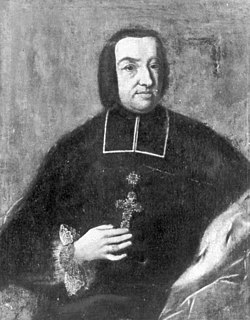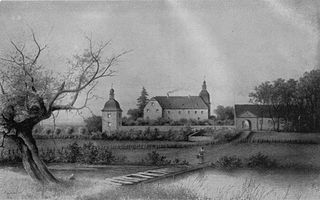
Arnold of Altena, count of Altena, count of Isenberg and Hövel, Vogt of Werden (1166–1209) was son of Eberhard IV of Berg. He inherited the north-western territorium of Altena, and became 1st count of Isenberg in 1200.

August Philipp Karl of Limburg Stirum (1721–1797), count of Limburg Stirum and Bronckhorst, was the son of Otto Leopold Count von Limburg Styrum und Bronckhorst, Lord of Gemen and Raesfeld (1688–1754) and Anna Elisabeth countess of Schönborn (1686–1757).

Hermann Otto I of Limburg-Styrum, count of Limburg and Bronckhorst, lord of Styrum, Gemen, Wisch and Borculo, and from 1640 to 1644 advocate of the imperial abbey of Vreden, was born in 1592, and died on 17 October 1644. He was the eldest son of Jobst of Limburg Stirum.
Moritz of Limburg Stirum (1633–1664) was the son of Hermann Otto I of Limburg-Styrum.
Christian Otto von Limburg Stirum, count of Limburg Bronkhorst and Stirum (1694–1749), was a member of the House of Limburg-Stirum and the third reigning monarch from the branch of Limburg-Styrum-Styrum.
Gemen was an immediate, sovereign lordship of the Holy Roman Empire, in the Lower Rhine region. Since Gemen had a vote in the Imperial Diet it was also an Imperial Estate. It was centered on Gemen, a small town and castle in the present municipality of Borken, western North Rhine-Westphalia.
Adolf Ernst of Limburg Stirum, count of Limburg Stirum, sovereign lord zu Gemen, son of Hermann Otto I of Limburg-Styrum.

Field Marshal Hermann Otto II of Limburg Stirum, count of Limburg Stirum and Bronckhorst, sovereign lord zu Gemen, was the son of Adolf Ernst of Limburg Stirum and an imperial Field Marshal.
Otto Leopold of Limburg Stirum, count of Limburg Styrum and Bronckhorst, sovereign lord zu Gemen and Raesfeld, was born in 1688 the son of Hermann Otto II of Limburg Stirum.
Maximilian Wilhelm of Limburg Stirum (1653–1728), count of Limburg Styrum, sovereign lord of Illereichen and Simontornya. He was the third son of Adolf Ernst of Limburg Stirum, sovereign lord zu Gemen.
Ferdinand Gotthard Meinrad of Limburg Stirum, count of Limburg, "Fürst" von Styrum, sovereign lord zu Gemen, was born in 1701, son of Maximilian Wilhelm of Limburg Stirum.
Karl Joseph Alois of Limburg Stirum, count of Limburg Stirum from the branch Limburg-Styrum-Iller-Aichheim, was the son of Maximilian Wilhelm of Limburg Stirum. He was born in 1685 and died in 1738. After his father's death he became sovereign lord of Simontornya.
Karl Josef Maximilian of Limburg Stirum, count of Limburg Styrum, sovereign lord zu Gemen, was the son of Alois of Limburg Stirum.
Johann Nepomuck of Limburg Stirum, count of Limburg Styrum, sovereign lord zu Gemen, son of Alois of Limburg Stirum, was born in 1756. He married in 1784 Maria Walpurga vom Stain and they had issue:

Styrum was an immediate lordship in the Holy Roman Empire, located in Mülheim an der Ruhr, North Rhine-Westphalia, Germany. It held no seat in the Diet and was circumvened by the lordship of Broich.

The house of Limburg Stirum, which adopted its name in the 12th century from the immediate county of Limburg an der Lenne in what is now Germany, is one of the oldest families in Europe. It is the eldest and only surviving branch of the House of Berg, which was among the most powerful dynasties in the region of the lower Rhine during the Middle Ages. Some historians link them to an even older dynasty, the Ezzonen, going back to the 9th century.

Count Charles Gaëtan Corneille Marie François-Xavier Ghislain of Limburg Stirum, GCVO, GCSG, a Count of the Holy Roman Empire and Knight of the Golden Fleece, was a member of the House of Limburg-Stirum. During his life he was a Belgian Senator and Grand Master of the Royal Households of King Leopold III.
Leopold Johann Otto Wilhelm of Limburg Stirum, was count of Limburg Styrum from the branch Limburg-Styrum-Iller-Aichheim.
Philipp Ferdinand von Limburg Stirum, Count of Limburg, lord of Styrum, was the fourth reigning count from the branch Limburg-Styrum-Styrum. He was also heir of Wilhermsdorf in Franconia and of the sovereign Lordship of Oberstein.
Jobst Hermann von Holstein-Schaumburg was a member of the House of Schaumburg.






